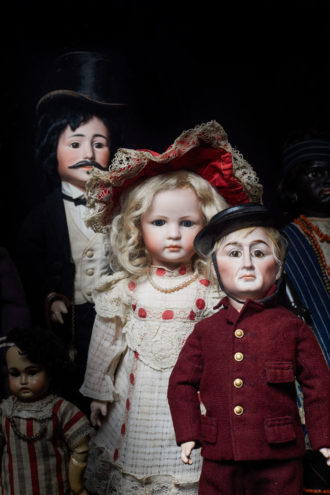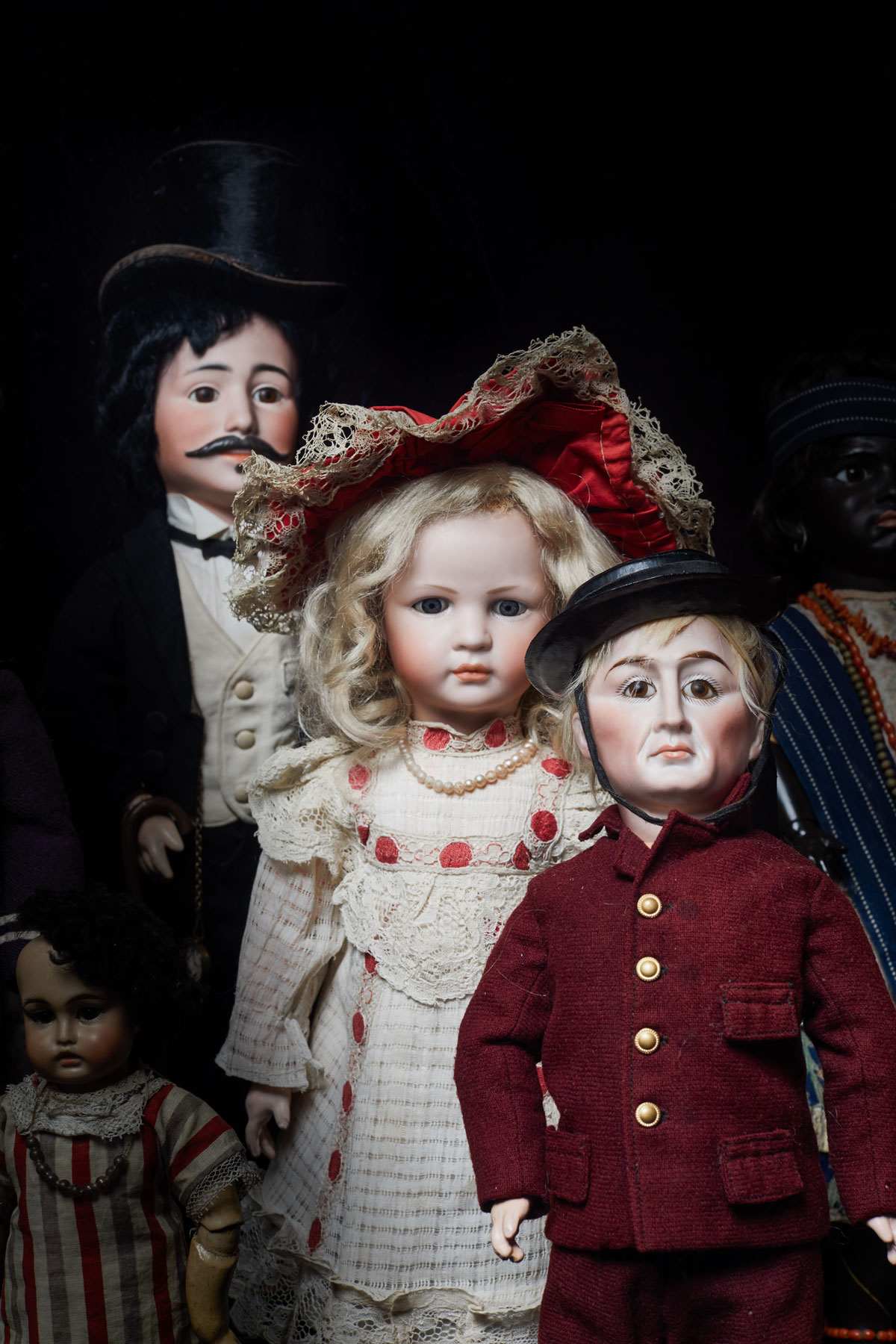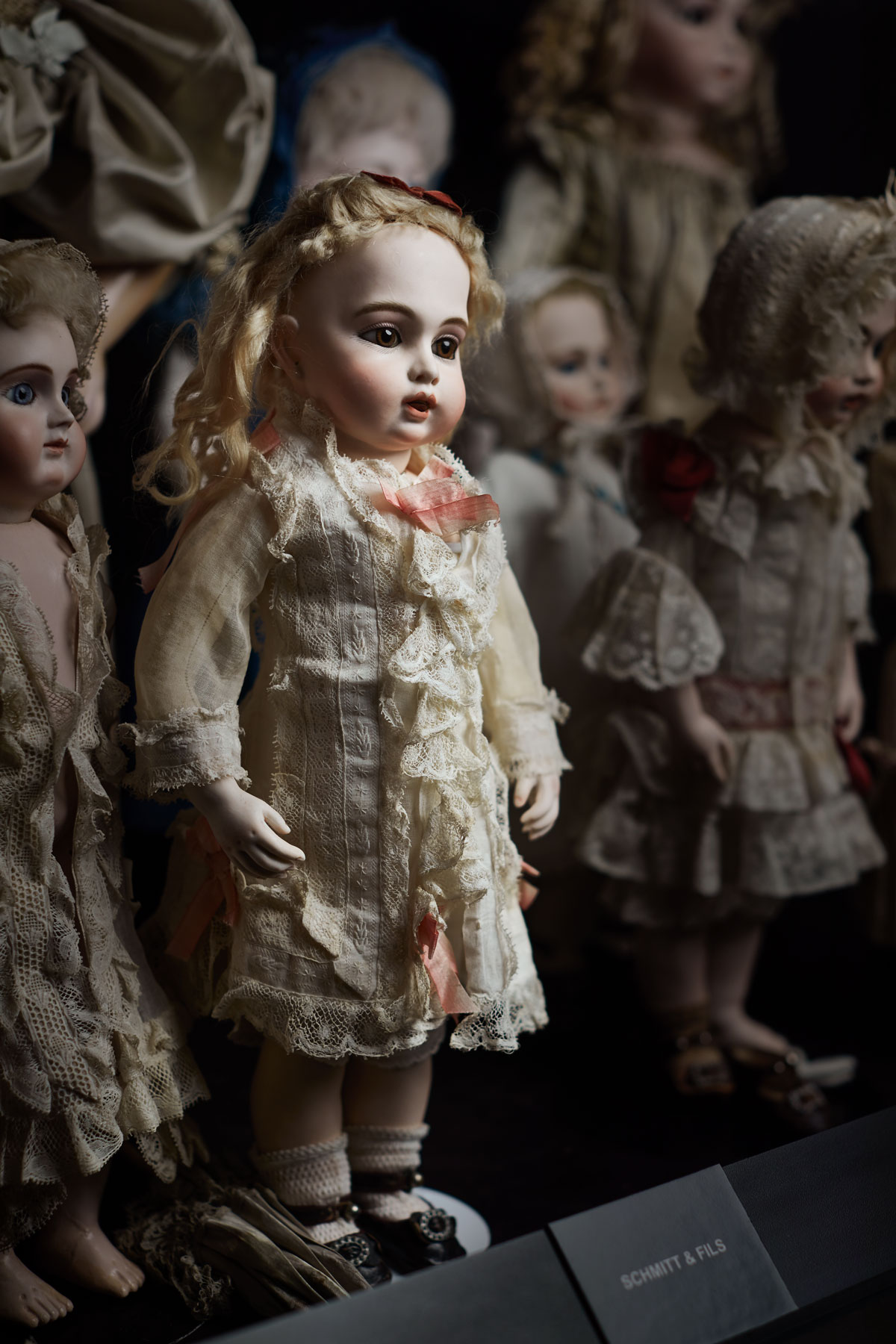Gail Cook has always loved collecting. When she was a little girl, she collected stamps, coins, and trading cards—but she never had much interest in dolls. Her first foray into doll collecting didn’t come till 1978, when Gail and her husband, Dan, gave their 9-year-old daughter a dollhouse as a gift. When the daughter asked for a nice doll to go along with it, Gail scoured toy stores and doll shops to find the right one. Eventually she uncovered two bisque German dolls in an antique shop.
“We got all these silks and satins and dressed the dolls up and put them in a competition,” Gail says. “We thought they were going to win.”
They didn’t. Instead, Gail and her daughter were told that silks belong on French dolls. German dolls, they learned, should wear cottons. This was a rookie mistake, but it intrigued Gail. Determined to learn more, she signed up as an apprentice judge for national doll competitions.

Today, Gail has judged competitions for more than 40 years and owns one of the finest antique doll collections in the world. As we ride the glass elevator down to the basement floor of the Cooks’ contemporary-style Highland Park home, built in 2000, Gail explains that she designed the gallery specifically for her dolls. The temperature is controlled, the lighting is cool, and there’s no wood in the room—acidity can damage the fabrics.

Downstairs, hundreds of eyes peer out from the museum-style glass cases that run the length of the low-lit room. A painting of Little Duke, a boy doll wearing a vaguely disinterested expression, hangs on the back wall. There’s something unsettling about walking into a dark room full of dolls, but after a minute, it’s hard to ignore their charm. The dolls in Gail’s collection were made largely in France and Germany between 1840 and the onset of World War I. They’re carefully dressed in bonnets, silks, lace, wool, cotton, and provincial costumes of every color. Some have interchangeable heads; others have two faces, each with a different expression. There are fashion dolls, which were sent to royal courts in Paris to display the latest fashions. There’s a witch, an American Indian, a St. Nicholas, and a World War I nurse. Each doll is something of an antique artifact and a work of art.
In addition to dolls, Gail collects furniture and paintings. Art by Gail’s daughter and son-in-law hangs in the main areas of her bright, spacious home; downstairs, two Warhol portraits of Gail look out to her workspace. She had planned on being a full-time artist herself, but she and Dan, an investment banker till 1992, had five kids. That didn’t leave a lot of time for painting. Fortunately, Gail found that restoring dolls—cleaning and dressing newly acquired dolls—was a surprisingly creative process.


“I would steal some time and sew lace on a petticoat or pantaloons,” she says. “I could always do some kind of work on the dolls. That kept me going, or else I’d have gone crazy.”
 Dolls rarely arrive from the auction block in their original clothes, so collectors aim to create an outfit that’s as authentic as possible. The clothes should match the doll’s type and origin—and competition judges have keen eyes for fashion faux pas. Gail keeps drawers full of accessories, from antique buttons to tiny hats. She has so many shoes that her husband once proclaimed her the “Imelda Marcos of doll shoes.”
Dolls rarely arrive from the auction block in their original clothes, so collectors aim to create an outfit that’s as authentic as possible. The clothes should match the doll’s type and origin—and competition judges have keen eyes for fashion faux pas. Gail keeps drawers full of accessories, from antique buttons to tiny hats. She has so many shoes that her husband once proclaimed her the “Imelda Marcos of doll shoes.”
Her collection has been featured in exhibits, books, and magazines. She has a drawer filled with competition ribbons, all won by dolls in her collection. Every year she attends the United Federation of Doll Clubs convention—a conference where Gail reconnects with friends and enters her own dolls in contests. (She wouldn’t say what her collection is valued at, but a look through auction websites reveals that prices for antique dolls can range from hundreds to thousands of dollars.) She buys and sells dolls often, but when asked if she plans to sell her collection in its entirety, Gail laughs. “Over my dead body.”







